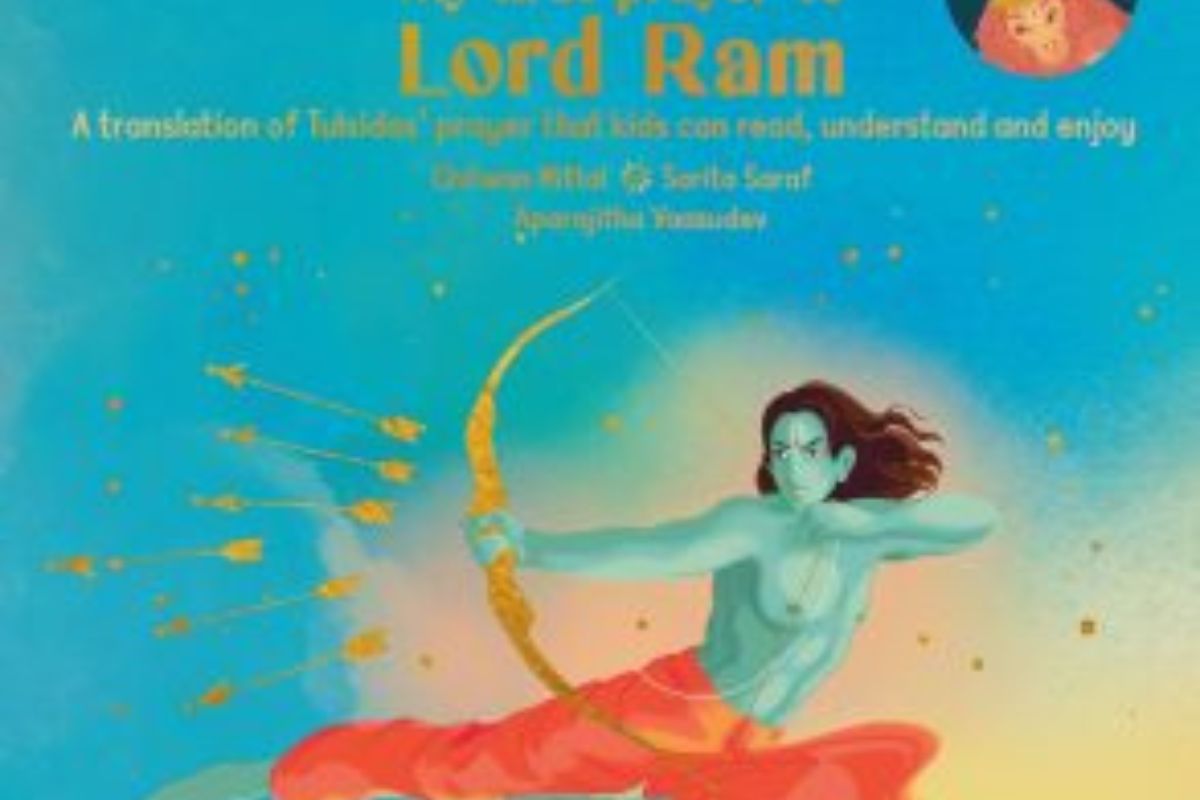Adidev Press’s latest book talks about Kodava culture of Coorg region
“Priya the Jungle Dancer” by Sathya Achia and illustrated by Janan Abir is a story that explores the unbreakable bond and love between children and their grandparents.
Both the books talk about the need to engage with a younger audience and explain them the intricacies of so-called complex phenomenon of life.

Cover of the book 'My First Prayer to Lord Ram'
Holding the attention of children for long and engaging them in a meaningful conversation or a book is a herculean task. Two recent releases by AdiDev Press are set to challenge this notion.
“My First Prayer To Lord Ram”, written by Chitwan Mittal and Sarita Saraf, with illustrations by Aparajitha Vasudev is an exquisite translation of Tulsidas’ prayer that kids can easily read, understand and enjoy. The translation of the original Awadhi text is crafted especially for young readers which contain word meanings and simple text as well as captivating illustrations that will keep them engaged.
Chitwan Mittal, founder and editorial director, AdiDev Press, says parents in India are now placing greater value on finding quality content for their children.
Advertisement
“Thanks to social media, parents of young children are able to engage directly with independent publishers like us. Through books like ours, which contain easy-to-read words and beautiful, engaging art, we seek to help parents teach their kids the importance of reading, and how stories can help children learn essential life skills and values,” she says.
Do you think books are an excellent medium to introduce kids to the world of religion or spirituality, especially in times when reading as a habit is getting extinct among the parents and children alike?
“Books can be a valuable medium for introducing kids to religion and spirituality because they present complex ideas in a structured and accessible format for children to explore at their own pace. In a time when reading habits are declining, engaging books like these with attractive illustrations can be an effective way to spark interest and facilitate discussions about these topics within families,” says Aparajitha Vasudev, illustrator of the book.
Talking about the inspiration from Lord Ram and his qualities that young children should imbibe, Mittal says one of the most important things the Lord can teach is how to conquer negativity with positive qualities.
“In a world that puts so much pressure on kids from a young age, I believe this book can help them see what is important and show them how to approach tough situations with determination and courage,” she adds.
Eminent author Sarita Saraf, who also contributed to the book, says some people find religion gives them a safe and secure environment to attain their spiritual goals, but it is not the only means.
“In ancient India, we had the ‘kathakaars’ (story tellers) who went around from village to village singing tales of the great ones, inspiring the young and old alike with their ballads. I believe we are modern versions of these Kathaakars, us book-makers, who provide parents and grandparents with tools to engage children in a similar way!,” she adds.
The next release by AdiDev Press is “You’ve Got This Arjuna!” by Lissa Coffey and illustrated by Rajesh Nagulakonda.
On the eve of a really big match, Arjuna starts to wonder whether he should play or not. But a conversation with his friend Krishna opens his eyes to what the game is really about. This fun tale introduces the Bhagavad Gita to kids through relatable characters, and condenses the life lessons of the spiritual text into a modern, accessible story.
Coffey, the US-based author, says the Bhagavad Gita changed her life.
“I had heard about it, and tried to read it, many times over the years, and then finally in 2015, I joined a Gita Class at the Vedanta Society with Swami Sarvadevananda. We took the text verse by verse and really dove deep. It was as if the clouds parted and the angels sang – it made me so happy! The Gita answers all of life’s questions,” she says.
Why do you think it is important for children to read the Bhagavad Gita?
“The principles that Krishna teaches Arjuna in the Gita are very layered. We can introduce our children to the Gita at a young age, so they get familiar with the story, and the characters. They can learn at their own level, where they are at for their age. As they grow, we can go deeper. We can all grow from this text. We learn something more each time we read it,” she explains.
How difficult is it to talk about the intricacies of the teachings of the Gita to a younger audience?
Coffey says the teachings of the Gita can be adapted for any age, for any experience level.
“For kids it is just really basic. I think with this book, the takeaway is adding to the old adage: It’s not whether you win or lose, it’s not just how you play the game, it’s that you make an effort, that you get in there and participate. Play. Do your best. The game is life,” she adds.
Both the books are available at your nearest stores and virtual platforms.
Advertisement